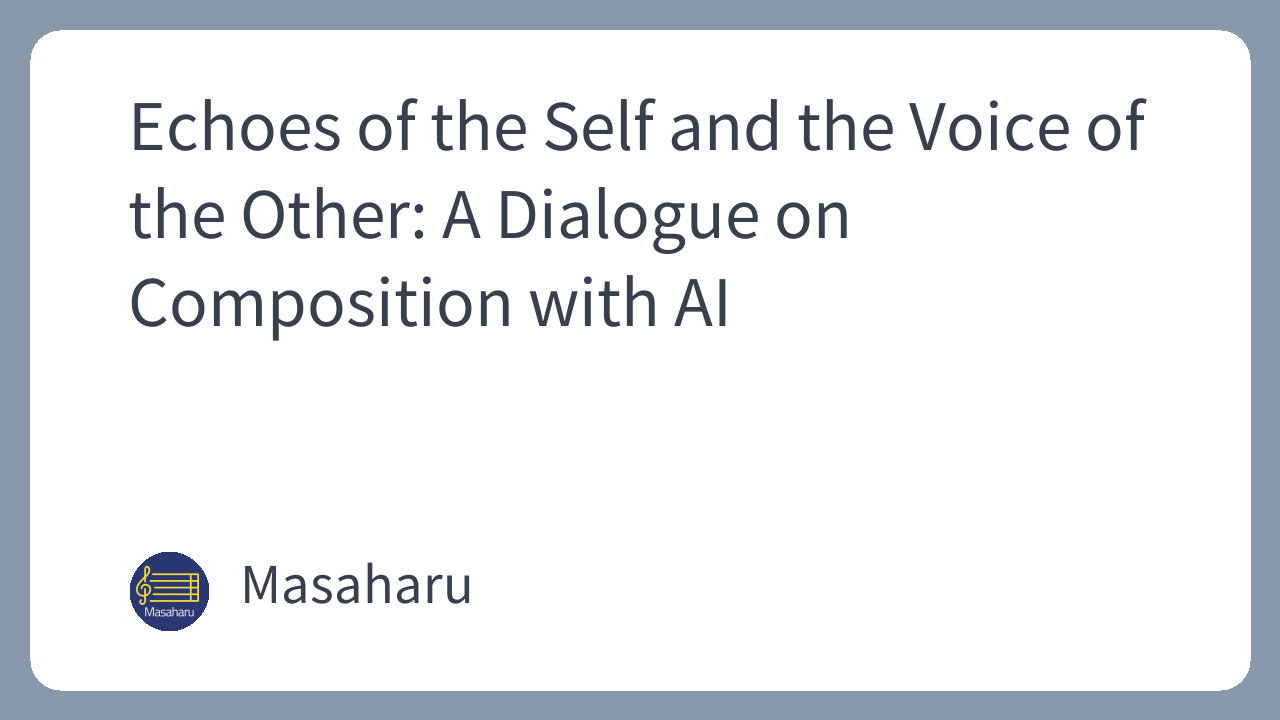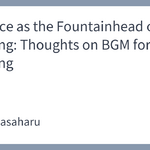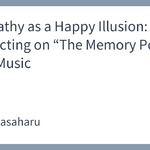With the rapid proliferation of AI-driven composition, we composers find ourselves daily questioning how to engage with this new tool. This article explores the thought process that AI composition has sparked within me as a composer, based on a series of discussions I had with an AI (Gemini). It was a curious experience, discussing the nature of AI composition with an AI itself.
Is AI Composition “Composition”? A Dialogue Between Material and Sensibility
My first impression when using an AI composition tool like Suno was that it felt less like composing and more like “digging” for music—exploring and unearthing it. Rather than weaving notes one by one, it was a sensation of searching for something captivating among the countless pieces presented by the AI. This felt akin to the joy of discovery a record digger experiences, sifting through a vast market of music to find a favorite album.
This experience prompted me to reconsider the very definition of “composition.” Does it exclusively mean creating everything from scratch? In contemplating this, I reaffirmed that a significant aspect of my own compositional practice is the act of “construction.” I engage in a musical dialogue with materials to structure and build—to compose.
From this perspective, the “finished pieces” generated by AI, as well as its fragmentary phrases, rhythms, and harmonic progressions, can all be treated as raw “material.” My natural compositional process involves considering how to arrange these materials and what context to give them. For example, I might layer harmonies and melodies that evoke polymodality over a specific part of an AI-generated track, thereby constructing a new harmonic space. This would defamiliarize the original musical context (the intended genre, era, message, or story) of the “finished AI piece.” This process is a dialogue between material and sensibility, and through it, new musical meanings and narratives are born.
In this sense, AI is not just a “technology” but a new “dialogue partner” in my creative activities. Viewing AI as such, I realize it’s not an entirely new phenomenon in music history. From Mozart’s musical dice game to John Cage’s chance operations in the 20th century and the sampling culture of hip-hop, all involve an encounter with “unpredictable elements” from an external source. AI composition is a modern variant of this, a presence that statistically reconstructs contingency. When framed as a “dialogue of sensibility” with “materials as an other” arriving from outside the composer, the emergence of AI composition appears not as a historical anomaly or singularity, but as just another contemporary variation in this long-standing tradition.
Where Do We Locate the Existence of Music?
The presence of AI as a musical dialogue partner is tied to my own view of music, which locates its existence not in “objective conditions” but in “subjective conditions.” In other words, I hold the position that “music exists within the sensibility of the listener.” The musical material presented by a composition AI may be merely the result of statistical processing of vast data. However, when I discover subjective beauty within that material, “music” as a meaningful entity emerges.
At this point, my AI interlocutor raised a question: what qualities are required of a composition AI to establish a “dialogue”? Should I expect an AI that learns my musical tastes and provides more engaging responses, or is a heterogeneous entity operating on a completely different logic more desirable for achieving accidental and fresh creation?
I believe both hold great potential. The crucial point remains not what the AI generates, but what I, the composer, find in its materials. The AI then pressed further:
- What if a composition AI statistically learns the subjective beauty you’ve found and begins to generate “musical material you are likely to find beautiful” with greater predictability?
- Would this cease to be a dialogue, trapping you in a space where your own voice merely echoes back?
- Would you not feel a sense of emptiness, listening to what is merely an “echo of the self”—an autistic and self-contained music?
To this, I responded that whether one finds value in this “echo of the self” is, on a meta-level, also a subjective judgment. I find a certain sublime beauty in the existence of such a pure “echo of the self,” and to arrive at a “self-contained, complete form” as a mode of creation is, in itself, a fascinating prospect. For such an “echo of the self” to be creative, it must be a consciously chosen closure (or confinement). While repetition born of unconscious habit can lead to stagnation or regression, intentional closure can be a path toward the purification of form.
A Body of Work as a Dynamic Entity
In response to my thoughts, the AI posed another question: “How do you distinguish between a ‘self-contained, complete form’ and ‘creative stagnation or regression’?”
This led me to question the premise of the question itself: “Is such a distinction even necessary?” I chose to approach this by shifting my perspective from the merits of individual works to viewing them all as a flow of the creator’s practice—a “body of work as a dynamic entity.”
By observing the trajectory of musical works born from the dialogue with the composition AI, I can observe where my inner self is heading and gauge its “degree of purity (or self-containment).” Viewing this “dynamic entity” of work becomes an indispensable meta-level self-evaluation, allowing me to objectively see my own growth and changes, and to set a course for future creation.
Final Thoughts
This process of discussion and reflection with an AI has helped me to articulate one aspect of my relationship with AI composition.
My tentative conclusion is that AI composition holds the potential to be not just a convenient tool, but a “new mirror” for questioning one’s own creative philosophy and exploring one’s inner world. And this “mirror,” in a sense, reflects something that has always been self-evident to the creator yet has remained unarticulated—it forces us to confront our own blind spots.
Finally, as a side note, there are various existing issues surrounding generative AI that I have not touched on here (such as the origin and copyright of the data from which generative AI learns, and arguments against generative AI), but I felt that these were beyond my current capabilities, which is why I decided to set the theme and conduct the discussion in this article.


